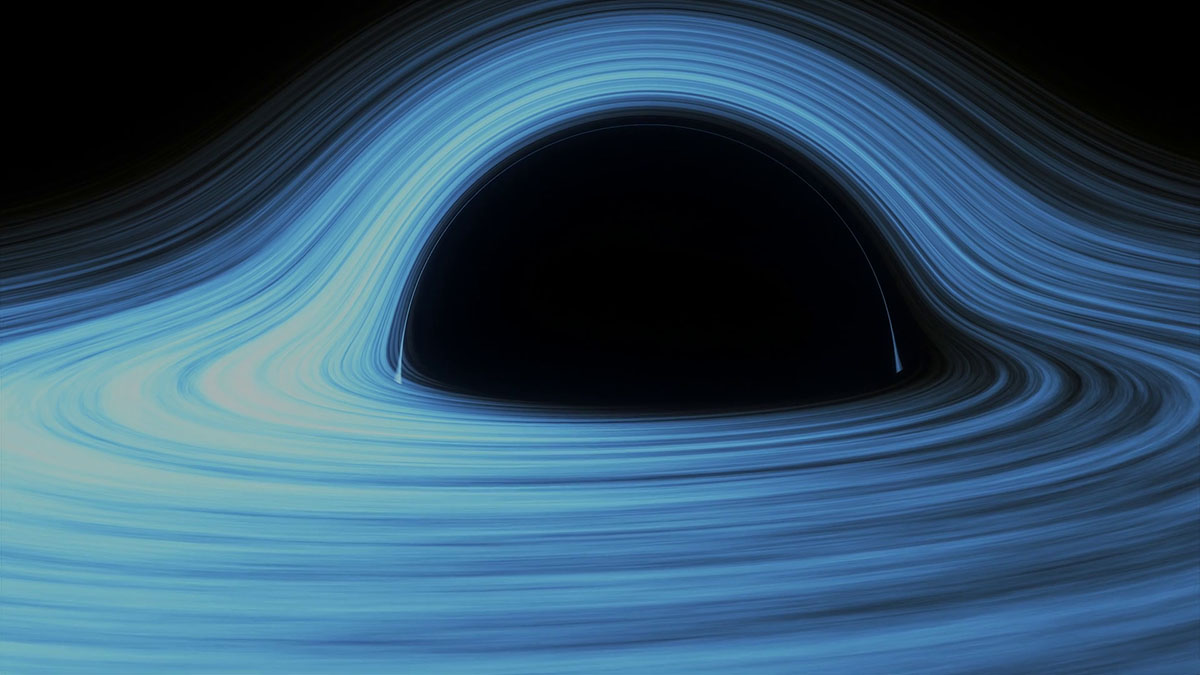right round, like a black hole baby, right round…

Black holes are often pictured as nearly motionless traps for anything unfortunate enough to pass too close to escape their pull. But the reality is that black holes often spin extremely quickly because the laws of physics pretty much mandate that they do unless they’ve been immobilized by collisions or close encounters with vast clouds of gas or other black holes. You see, when a massive stars innards implode, the resulting object has to conserve the angular momentum of its parent sun’s rotation and shrinking from millions of kilometers to tens of kilometers across means that its whirling around its own axis like a spinning top. But how fast could a black hole spin before the laws of physics intervene?
Its spin can’t be so energetic that its event horizon and ergosphere peel away, revealing the torrents of energy circling the singularity. A black hole’s tidal forces are simply too strong to let that happen. But that still lets many of these objects rotate at a significant percentage of the speed of light, deforming space and time as they do through a process known as frame dragging. Any stars or clouds of dust orbiting these rapidly spinning black holes would be shot outward, then yanked inwards while experiencing extreme gravitational tides along their path, wobbling as the fabric of space and time itself is twisted around them.
All this means that each one of these objects will have its own rotational speed limit. In the case of the supermassive black hole at the center of a galaxy called NGC 1365 that limit is 84% of the speed of light. Considering that it’s roughly the mass of Sagittarius A*, the monster at the heart of the Milky Way, this works out to a full rotation around its axis in less than ten minutes. And while this might not sound impressive, remember that we’re talking about objects 44 million kilometers across, or slightly more than the distance between Earth and Venus at their closest orbital positions to each other.
Meanwhile, some stellar sized black holes spin even faster according to a recent discovery by India’s AstroSat. While observing a binary star system known as 4U 1630-47, it found one spinning around its axis at just about 90% of the speed of light, which translates to a full rotation in less than a millisecond. Conditions around this object would be beyond extreme and the matter it consumes would be gravitationally manhandled beyond recognition long before it was pulled beyond the event horizon. Why is it rotating so quickly? Well, we don’t know its exact history, but there are plausible scenarios in which collisions and close gravitational encounters pressed the gas pedal on its spin.
But even that might not be the absolute speed limit for a black hole’s rotation. Theoretically, one could spin at just a hair below the speed of light so it does seem plausible to see an object even faster than 4U 1630-47’s. Yet if we consider the stress this would put on the black hole’s already tenuous and complex structure, it’s unlikely to spin that much faster in absolute terms because its internal forces will intervene. And that leaves us with a question to consider. Has a black hole ever been pushed beyond its rotational limits, and if so, what happened to it?





